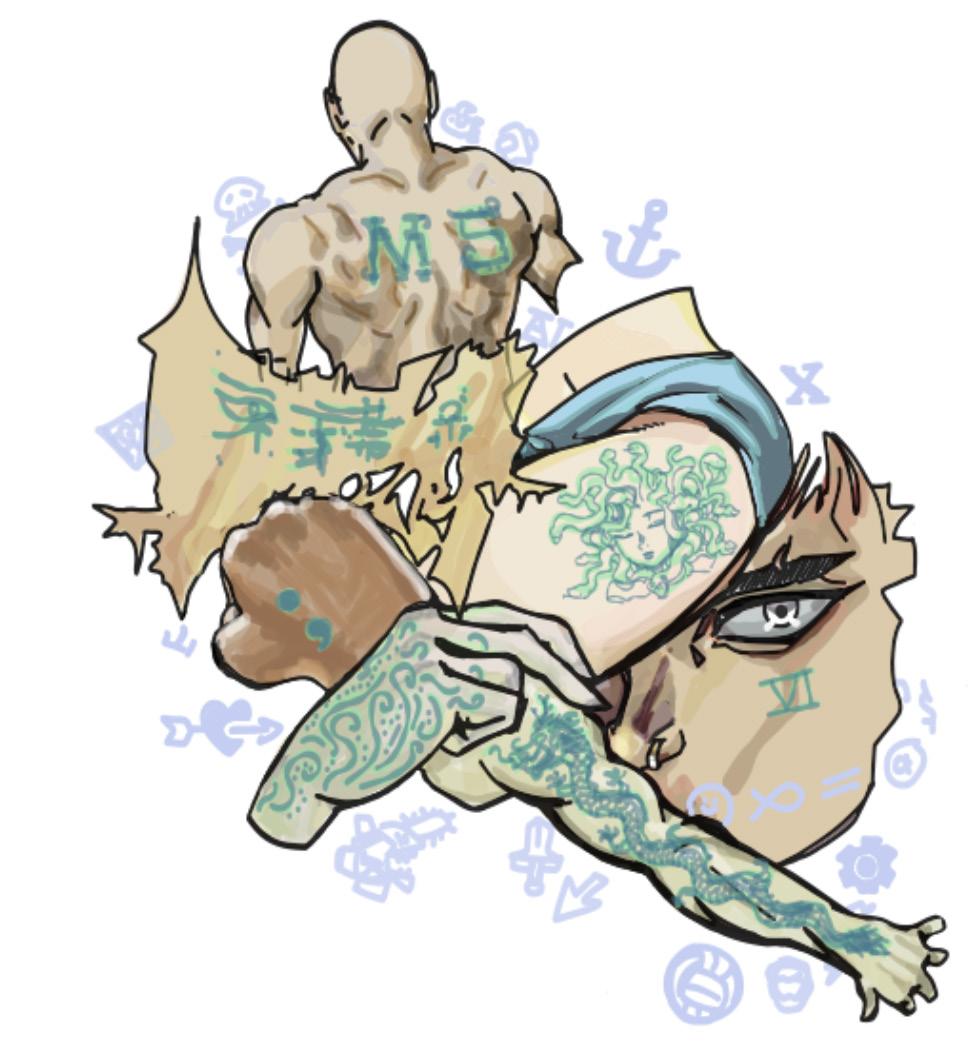
3 minute read
Tattoos
16 | DESIGNED BY PRITHIKA SUNDAR THE SOCIETAL
ILLUSTRATION BY ALEXANDER LIU
Advertisement
ACCEPTANCE OF TATTOOS
opinions editor
From criminals to sailors, gang members and grandmothers, body ink is more popular among more people than ever. From its usage as a status symbol in Ancient Egyptian cultures to its presence in gang loyalty initiations and later employment in cosmetic enhancement surgeries, tattoos have stood the test of time and are an evolutionary art form, constantly changing with the development of society.
Examining the usage of body ink and its correlation with momentous events throughout history draws connections to our past while progressing towards more inclusivity, illuminating an accepting society.
Tattoos in the workplace were deemed unprofessional until recent decades. Until the end of the 20th century, negative stigmas circulated gang or criminal influence, a phenomenon that has existed since classical antiquity. The art of embedding ink into skin has existed for tens of thousands of years, with discoveries of tattoos on mummified skin dated from 3370 B.C.to 3100 B.C. Ancient Greek and Roman civilizations used tattoos to punish enslaved people and criminals.
The practice of body ink saw another surge in popularity in the 1700s when Captain James Cook’s explorations in the Pacific exposed sailors to Polynesian body art, spreading the practice to seamen in Europe and America. During the Edo period, from the early 17th century to the late 19th century, tattoos became increasingly widespread as a status symbol within the Yakuza.
Similarly, beginning in the 1930s in the United States, criminal tattoos were used to show gang membership and express personal history. Time and time again, tattoos have proven to be used among the misfits of society, from foul-mouthed sailors to rebellious lawbreakers. Thus, the harmful stereotypes surrounding body ink are generally inaccurate but not without reason.
In the modern age, tattoos have become increasingly widespread among the general population. The usage of body ink as a form of artistic self-expression is especially common among younger generations, particularly in designs centering on gender, sexual orientation and personal experiences. Today, tattoos are expressions of identity and remembrance, marking monumental moments in one’s life, from the World Trade Center tragedy to
“EMPHASIS ON INDI-
VIDUALITY AND SELF-EX-
PRESSION [...] RESULTS
IN THE INEVITABLE POP-
ULARITY OF TATTOOS IN
THE WORKFORCE. ”
tributes to fallen soldiers in war. A medusa tattoo is an emblem of strength for sexual assault survivors, while a semicolon is a message of solidarity among suicide survivors. With the exceptions of jobs in the military, politics and administrative industries, tattoos are becoming more acceptable in the U.S. workforce.
With the emphasis on social consciousness and vulnerability in recent decades, stigmas of tattoos in the workplace lessened significantly. In October 2021, the U.S. Marine Corps updated its policy regulating tattoos created in June 2016. The revised policy allows Marines to have tattoos anywhere except on their head, neck and hands.
As younger individuals begin to fill the workforce, discrimination against body ink becomes decreasingly common, leading to a continuous cycle of tattoos becoming widespread. Another factor is increased accessibility for getting tattoos as well as removing them. Tattoo guns and ink are easily purchasable online, providing an alternative to individuals who lack the proximity or funds to visit a professional parlor.
Furthermore, the advancement of tattoo removal technology alleviates the common fear of the permanency of tattoos. Thus, while tattoos have become increasingly popular, so has tattoo removal. In the last year, searches for “tattoo removal” on Google have risen by 40 percent since 2020, per data from Google Trends.
Despite negative stigmas gradually dissipating, younger individuals, especially teenagers, face scrutiny for getting tattoos from adults. Getting tattoos as a minor or teenager is seen as a reckless and dangerous decision. However, an exception to this attitude is cultural body art, a practice common in customs and religions all around the world, from the Maori people in New Zealand to Southern Indian tribes who practice pachakutharathu, an ancient form of tattoos.
Tattoos illustrating appreciation for cultural or linguistic identity are also accepted over typical recreational tattoos and are prevalent among immigrants or people with bicultural backgrounds, including students. With the gradual acceptance of tattoos comes a new generation of individuals with their own social standards. Emphasis on individuality and self-expression, along with the growing tattoo industry, results in the inevitable popularity of tattoos in the workforce LIFESTYLES | 17










